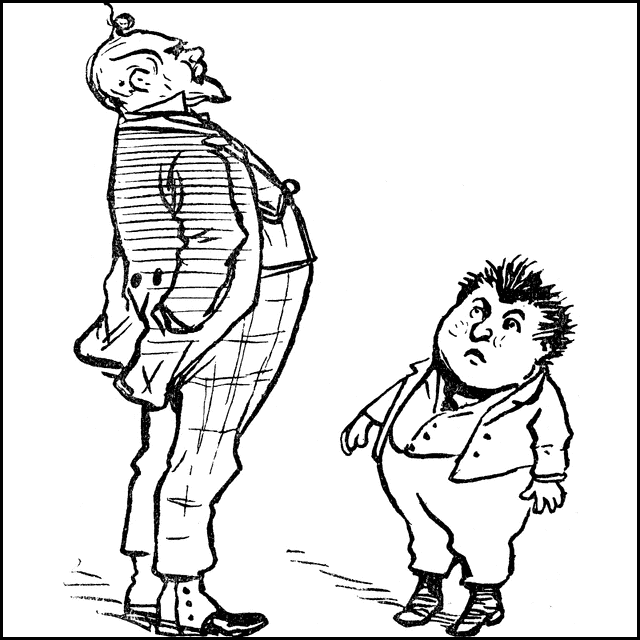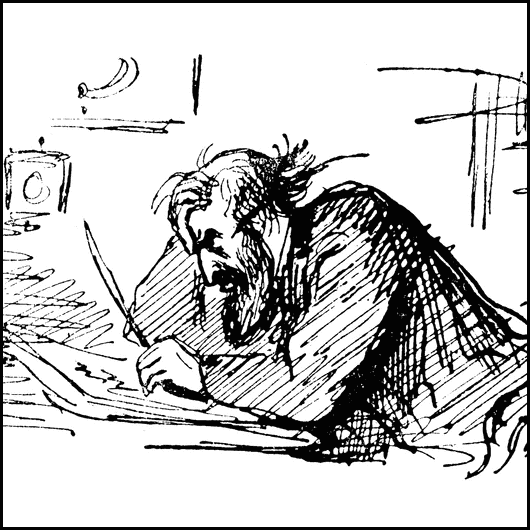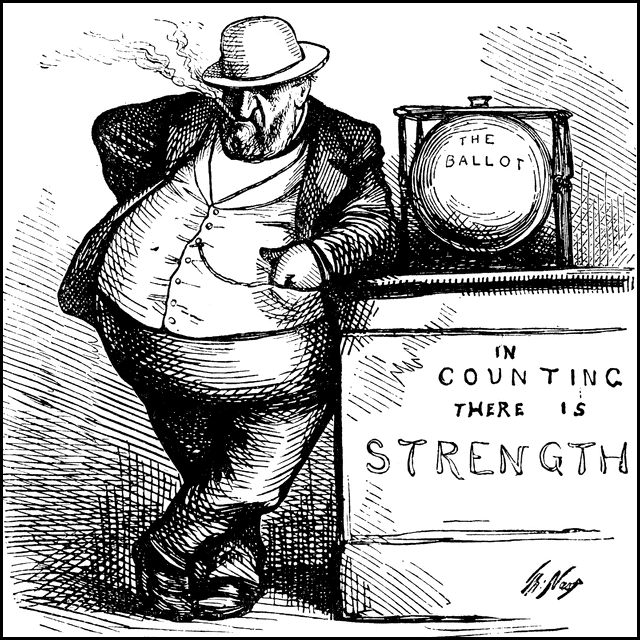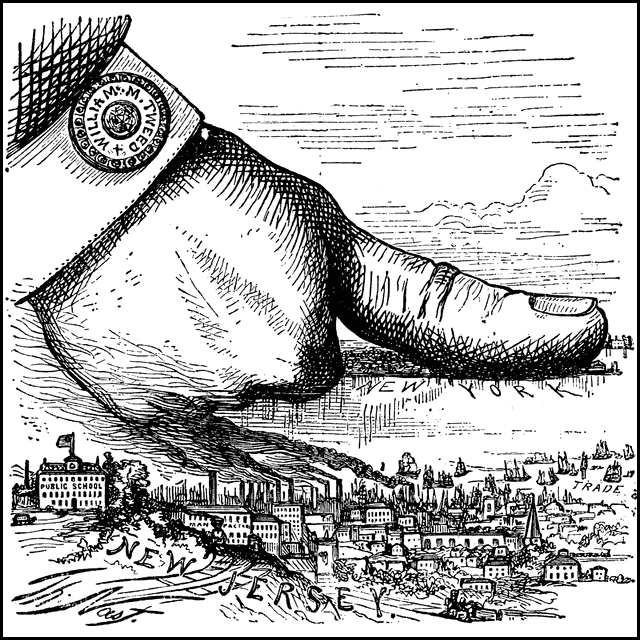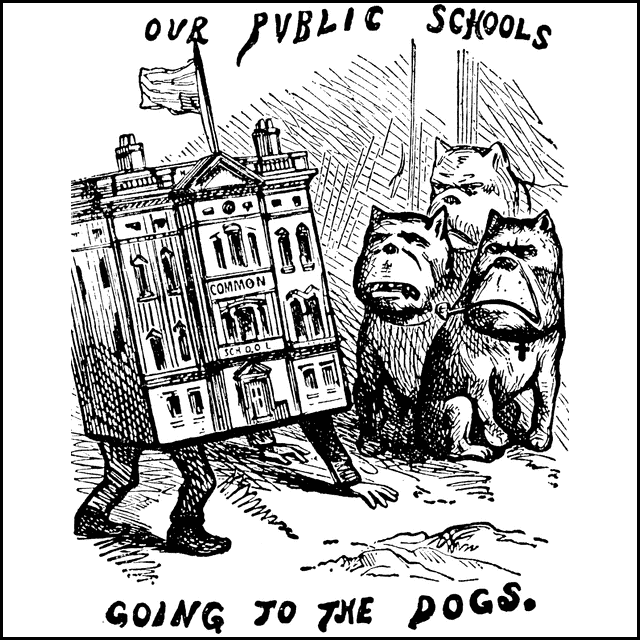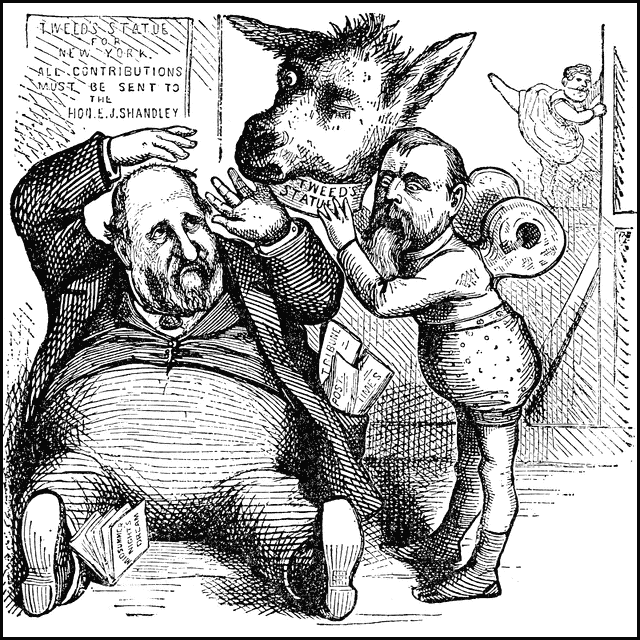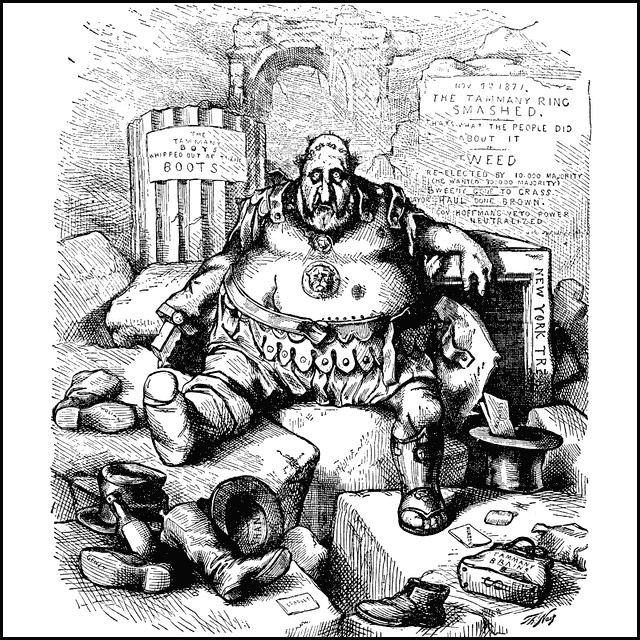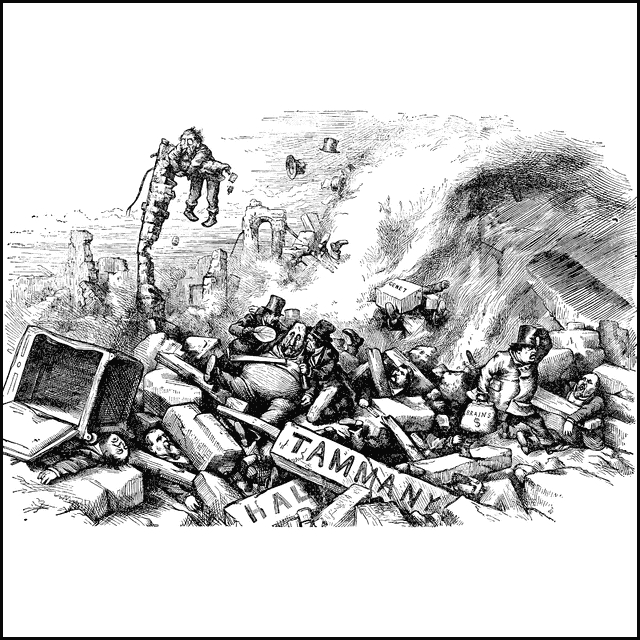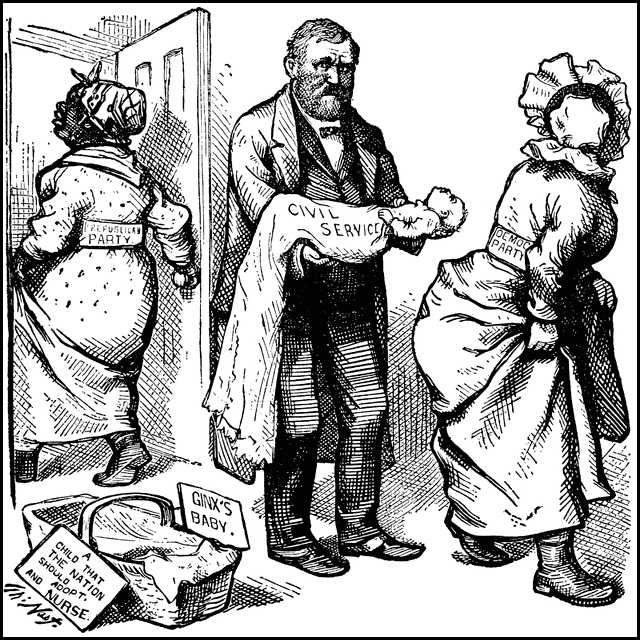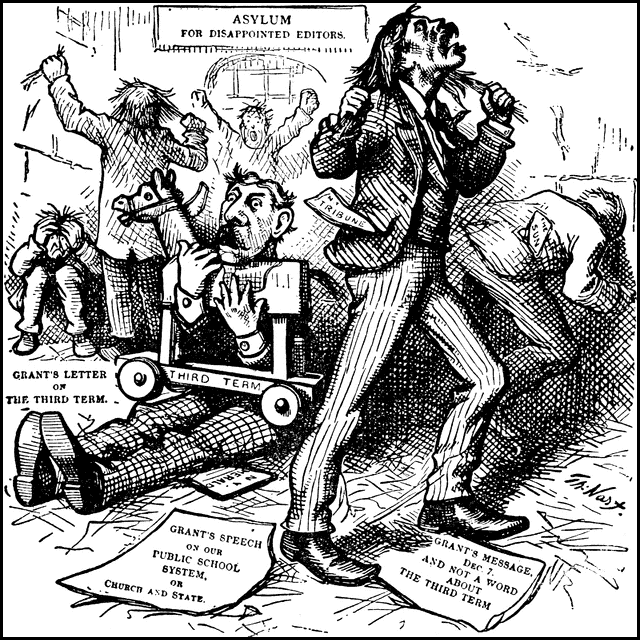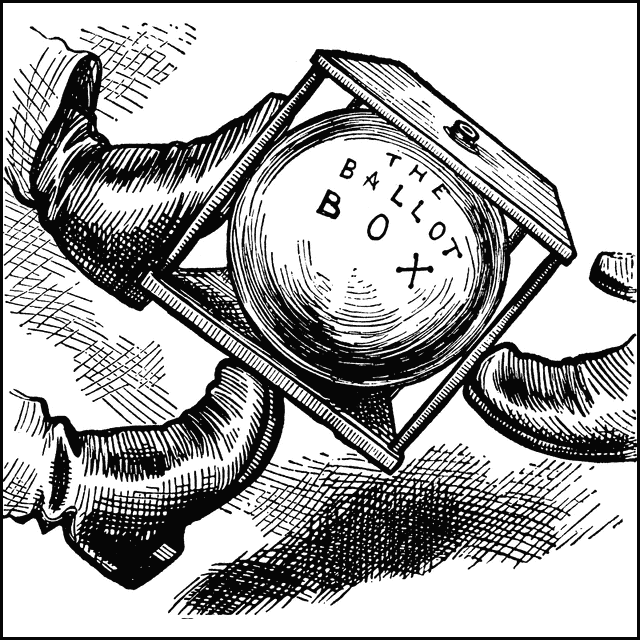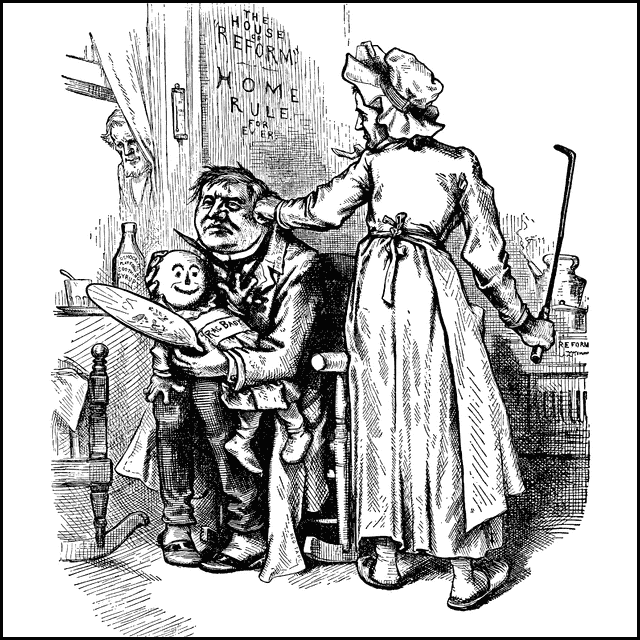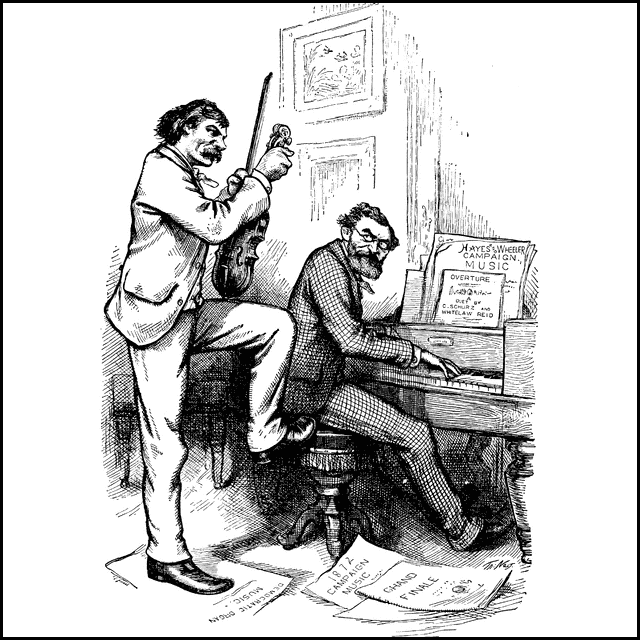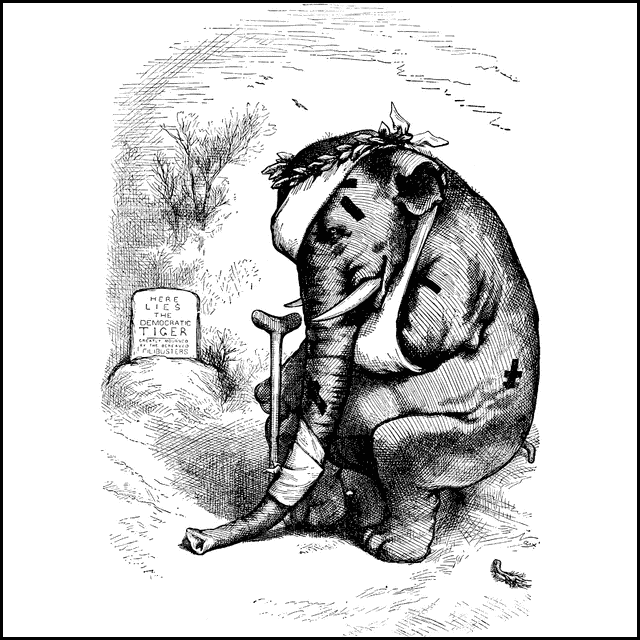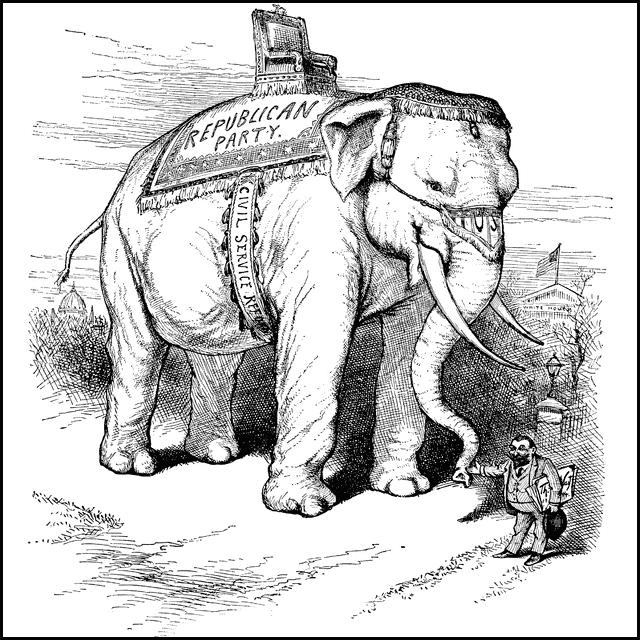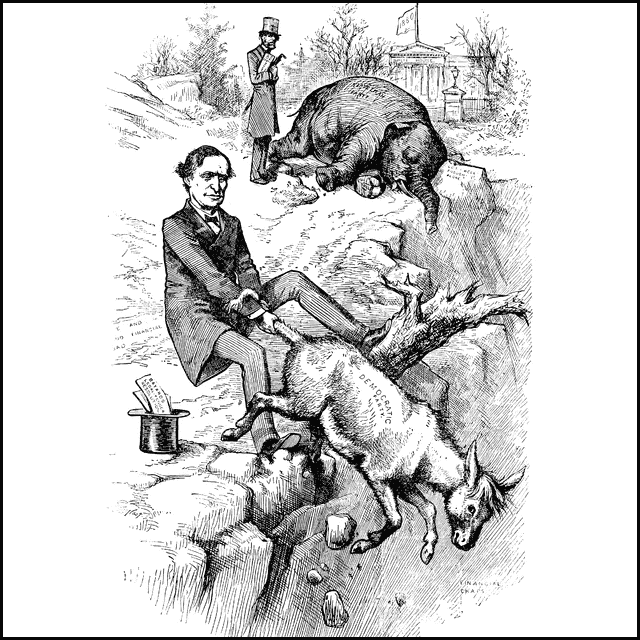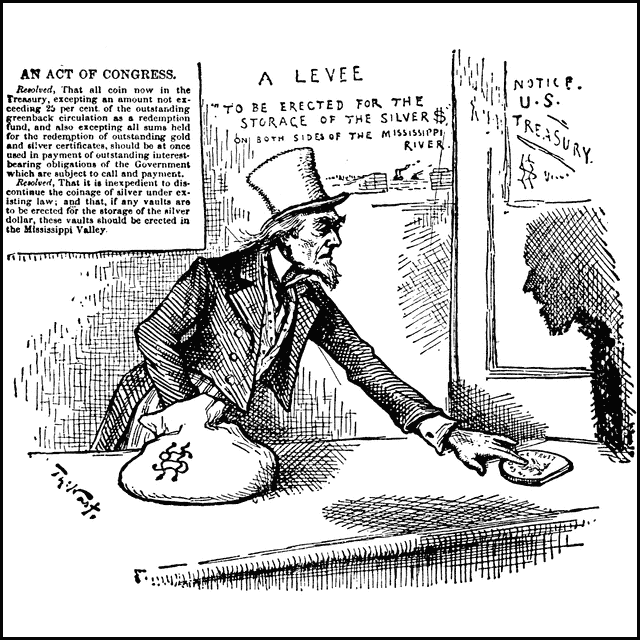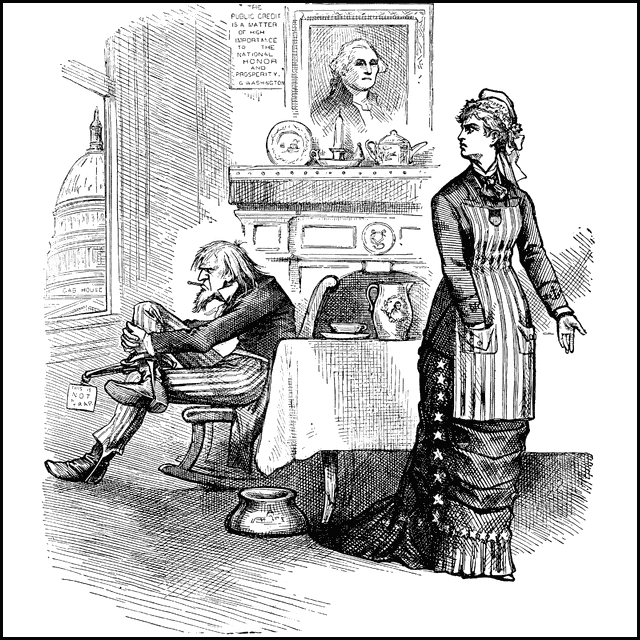September 27: Thomas Nast
On this date in 1840 Thomas Nast, the Father of the American Cartoon, was born. Nast was the most influential political cartoonist of the nineteenth century. His work impacted every presidential election from 1864 until 1884.
Frank Leslie Interview with Nast
Caricature of Thomas Nast’s first interview with Frank Leslie. Frank Leslie was a great publisher, in charge of the Weekly. Nast (shown on right) was a fifteen-year-old at the time. Illustration from the ClipArt ETC website.
Thomas Nast Drawing Caricatures
Thomas Nast drawing caricatures from the ClipArt ETC website.
“As a political cartoonist, Thomas Nast wielded more influence than any other artist of the 19th century. He not only enthralled a vast audience with boldness and wit, but swayed it time and again to his personal position on the strength of his visual imagination. Both Lincoln and Grant acknowledged his effectiveness in their behalf, and as a crusading civil reformer he helped destroy the corrupt Tweed Ring that swindled New York City of millions of dollars. Indeed, his impact on American public life was formidable enough to profoundly affect the outcome of every presidential election during the period 1864 to 1884.” —Albert Boime
The ClipArt ETC website includes over 250 Thomas Nast cartoons related to many political and social topics of the second half of the nineteenth century. We’ve included sample cartoons below grouped by some of the topics Nast was best known for.
Boss Tweed and Tammany Hall
Boss Tweed had gained control of the New York City government by 1870. Tweed and his associated defrauded the city of millions of dollars. Nast began his cartoon campaign against Tweed in earnest in 1871 and by November of that year, Tweed and other members of his corrupt ring were removed from office. Two years later, Tweed was convicted and sentenced to jail.
The Root of Tammany Power
Nast depicts New York corruption with the abuses at the ballot box as the root of Tammany power. Boss Tweed: “As long as I count the votes, what are you going to do about it?” Illustration from the ClipArt ETC website.
New York Under Tweed's Thumb
Nast depicts New York corruption with New York under Tweed’s thumb. “The Boss – ‘well, what are you going to do about it?'” Illustration from the ClipArt ETC website.
Public Schools Going to the Dogs
Nast depicts New York corruption under Tammany Hall Ring. Nast’s shadows of forthcoming events predicts our public schools “going to the dogs.” Illustration from the ClipArt ETC website.
Boss Tweed Holds Reins of Democratic Party
Nast depicts New York Corruption with Boss Tweed holding onto the reins of the Democratic Party prior to the election of 1872. Illustration from the ClipArt ETC website.
Shandley and Tweed's Rehearsal
Nast depicts Shandley and Tweed rehearsing A Mid Summer Night’s Dream where Shandley is Puck. Shandley (as Puck): “Allow me to immortalize you, Boss!” Tweed (realizing his part): “I most emphatically and decidedly object to it. I am not deficient in common-sense.” Illustration from the ClipArt ETC website.
Tammany Ring Defeated
The Tammany Ring defeated. Tweed as Marius amongst the ruins of Carthage. Available from the ClipArt ETC website.
Tammany Hall's Blow Over
The defeat of the Tammany Ring. “Something that did blow over on November 7, 1871.” Available from the ClipArt ETC website.
Boss Tweed is Too Big for Prison
No prison is big enough for Boss William Tweed. illustration from the ClipArt ETC website.
President Grant
The primary concern of the Grant administration was Reconstruction. Grant was also the first president to successfully push civil service legislation through Congress. Previously, government positions were handed out to party faithful as part of a spoils system. Grant attempted to create a civil service based on merit, not political favoritism.
Edit Grant as William Tell
President Ulysses S. Grant as William Tell, defiant against the Greeley-Gratz Brown Presidential bid. Illustration from the ClipArt ETC website.
President Grant's Proposed Civil Service Reform
President Grant’s proposed Civil Service Reform not to the taste of certain Senators. Illustration from the ClipArt ETC website.
Grant's Civil Service Reform
President Grant’s Civil Service Reform is not to the liking of either party, despite enthusiasm. Illustration from the ClipArt ETC website.
Grant Denies Third Term
President Grant denies his ambitions for a Third Term. “A blighting effect of the President’s message.” Illustration from the ClipArt ETC website.
Presidential Election of 1876: Hayes vs Tilden
The 1876 presidential was one of the most disputed elections in American History. After a compromise in which Republicans agreed to withdraw federal troops from the South, Republican Rutherford Hayes was awarded 20 contested electoral votes squeaking past Democrat Samuel Tilden 185-184. The troop withdrawal effectively ended Resconstruction and ceded power in the South to Democratic Redeemers.
1876 Election's Ballot Box
The 1876 Election, the ballot box kicked about in the “national game that is played out.” Illustration from the ClipArt ETC website.
1876 Election's Reform of Hendricks-Tilden
During the 1876 Election, the reformed Democratic ticket of Hendricks-Tilden. “Hen(dricks) Pecked; Mrs. Tilden: ‘Nurse the baby, while I stir up the fire.” Illustration from the ClipArt ETC website.
1876 Election's Shurz and Reid
During the 1876 Election, Senator Carl Schurz and Whitelaw Reid support Hayes’ Presidential Bid by getting in tune together. Illustration from the ClipArt ETC website.
1876 Election's Pyrrhic Victory
The 1876 Election, an eventual Pyrrhic victory for Hayes and Republicans. “Another such victory and I am undone” – Pyrrhic Illustration from the ClipArt ETC website.
Nast Characters
Nast is remembered for creating or popularizing political cartoon characters well-known even today. He created the elephant as the symbol of the GOP and established the modern visualization of Santa Clause. He also modified and popularized cartoon characters for Uncle Sam, Columbia, and the Democrat party.
Republican Party Elephant
During the 1884 Presidential Election, the “sacred elephant” of the Republican Party. Illustration from the ClipArt ETC website.
1880 Presidential Elections
The 1880 Presidential Elections with the Democratic Donkey being pulled back from the brink. Illustration from the ClipArt ETC website.
Uncle Sam and U. S. Treasury
Uncle Sam from bad to worse, 83 cents for 100 cents. Illustration from the ClipArt ETC website.
Silver Bill Passage
Passage of the bland Silver Bill as Columbia abuses Uncle Sam for his doubtful financial policy. Illustration from the ClipArt ETC website.


